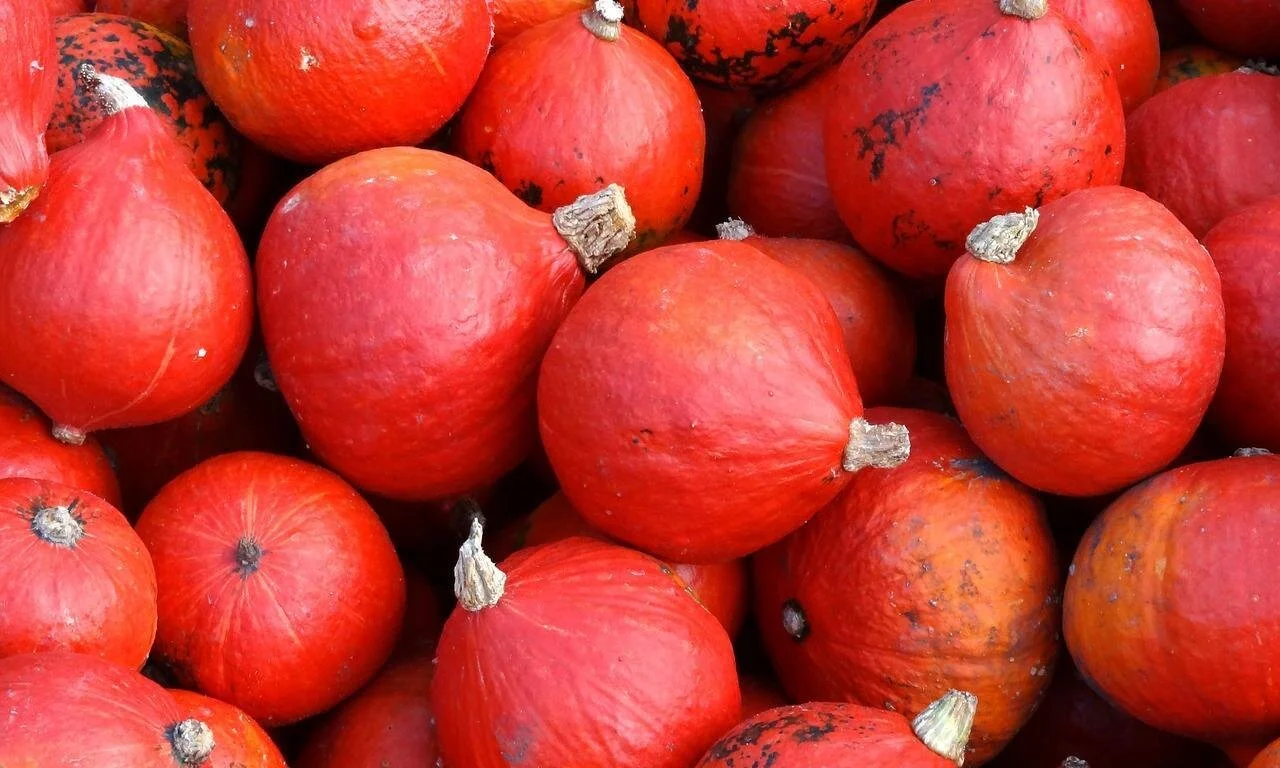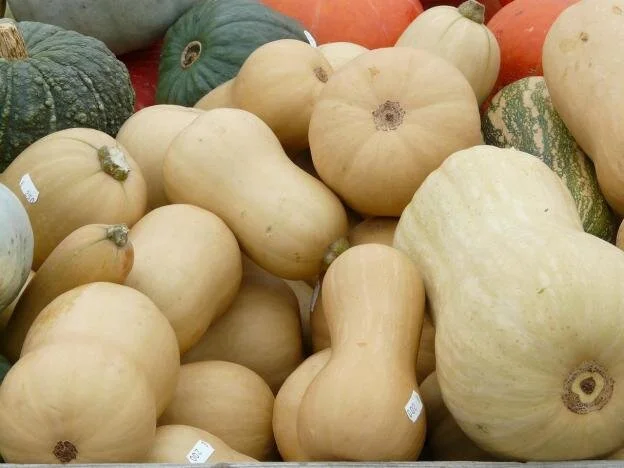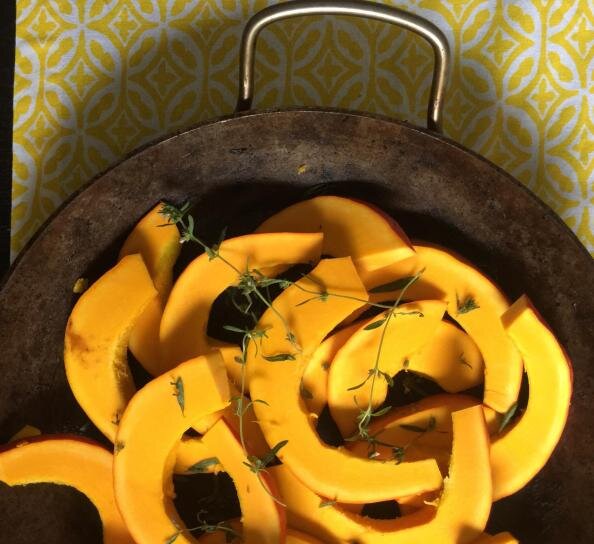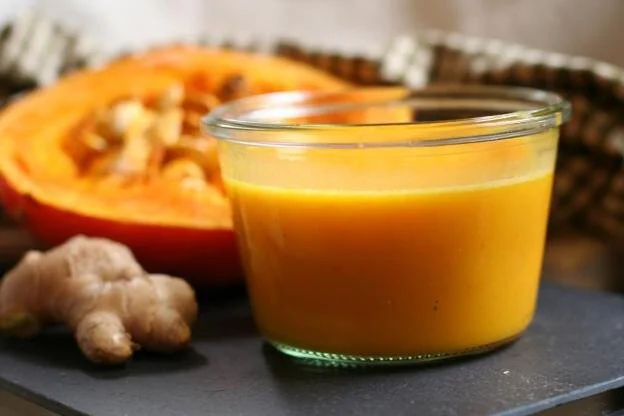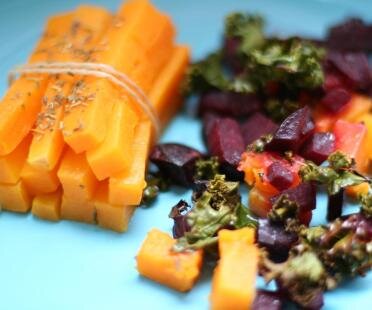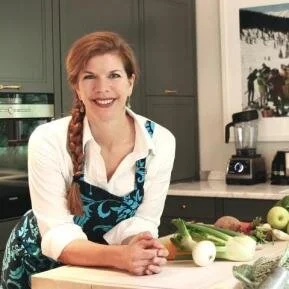By Monika Bock
It’s October and finally pumpkin season again. Anyone else miss the squash and pumpkins during the spring and summer? The supply of summer berries is usually enough to distract me, but as the air and light of fall changes, I instinctively look for the hearty squash. As the leaves start to turn I also start to warm up to the idea of soup for dinner. My go to favorite is pumpkin soup.
We are so fortunate in Munich that if you live anywhere in the city you are relatively close to a farm or field that displays and sell pumpkins and squash on an honor system basis where you put the money in the tin. The two that are usually on offer are the Butternut Squash and the Hokkaido Pumpkin. Both of these nutrient dense varieties of squash make a great base for soups with many different profiles (see below for some ideas), roasted on their own to bring out their sweetness, or steamed as an easy side dish.
The nutrients in squash are mainly of the beta carotene variety. One cup of cooked squash contains around 10 mg of beta carotene. Beta carotene is an antioxidant which is a type of polyphenol that occurs naturally in fruit, vegetables, wine, and dark chocolate, to name just a few foods. It is a precursor that our body can convert to Vitamin A from these orange and yellow plant pigments. The deeper the color, the more beta carotene is present. Vitamin A is important for immune function, supporting healthy cell growth and vision.
Most squash varieties are in season now and can be purchased at any market. I find that the farmers’ stands offer something a bit special. There are usually some other specialities on display as well.
Butternut Squash:
This sweet tasting squash usually has a pale beige appearance. Can vary in size from the size of your fist to 2 or 3 kg. I usually aim for 500-700g to have enough for a soup or to roast.
Butternut squash roasted in the oven with rosemary. Can be eaten as is or pureed into a soup.
To prepare:
Oven temperature 180-190 ℃
Timing: Will vary between 35-60 minutes depending on size and thickness of pumpkin slices or halves.
Slice in half and place face up on a roasting dish. Roast for 45-50 minutes with herbs of choice.
Slice in half, deseed, place face down in a water bath in a roasting dish. Only pour enough water to cover the bottom third of squash. Roast for 35-40 minutes. Use a knife to test if is done. (Be very careful when turning this over – steam and extremely hot!)
Peel with a vegetable peeler and cut into discs. Place on a sheet pan and roast with herbs of your choice
Dice squash and add it to a variety of vegetables and roast them together for 40 minutes.
Steam squash in a steaming basket on stove top, then add to soup stock and blend until smooth
Steam squash and serve as is as a side.
Butternut squash contains calcium, magnesium, phosphorus and a whopping 298% of your daily value of Vitamin A!
Hokkaido Pumpkin (Red Kuri squash) (Kürbis):
The Hokkaido pumpkin is a versatile pumpkin filled with delicious nutrients and it is easy to work with. Look for one with smooth skin and a deep orange color. The size varies anywhere between 300g and 1 kg or above. The deeper the color the more nutrients it contains. These pumpkin store well for months in a cool dark place.
You may find it’s easiest to cut off the stem and base with a sharp knife. When the pumpkin can sit flat on the cutting board slice the pumpkin into medium thick slices and then chop in desired size from there.
Slice hokkaido before roasting.
You can roast the slices (see picture above) or use hokkaido as a main ingredient in a fall soup. It is one of the most uncomplicated vegetables to prepare as there is no need to peel the pumpkin before cooking. Just dice and add it to a sauce pan with shallots and some cooking fat. Sauté over medium heat for five minutes, stirring constantly. Then add broth or water and other ingredients of choice. Bring to a boil and then reduce to simmer for 45-50 minutes. You’ll then want to allow it to cool slightly before using a hand blender to blend it into a soup.
To prepare:
Oven temperature 180-190 ℃
Timing: Will vary, between 35-60 minutes depending on size and thickness of pumpkin slices or halves.
Cut in half and roast on a sheet pan
Cut in slices and roast
Cut in slices then dice and use in soup preparation
Versatile
Both of these varieties of squash/pumpkin are versatile and you can easily utilize them in a different recipes this fall. Here are some different spices and herbs to change up their flavor profile. Whether you get them at your neighborhood farmers’ market here in Munich, at a farm stand just outside of town or at your corner market, these nutrient dense vegetables are a perfect addition to your fall kitchen.
Pumpkin soup with ginger and coconut.
Fresh or dried herbs to use in soups:
Herbs de Provence
Marjoram
Thyme
Oregano
Rosemary
Tarragon
Bay leaves
Basil
Coriander
Parsley
Sage
Turmeric/Curcuma
Butternut squash sticks – steamed and served with Herbs de Provence.
Seasoning ideas:
Lemon zest
Lemongrass
Bay leaves
Ginger
Garlic
Onion
Shallots
Whole peppercorns
If you are making soup, preparing your own bone broth can turn a run of the mill soup into something not just delicious, but übernutritious as well!
If you’re curious to read more:
https://www.medicalnewstoday.com/articles/252758.php
https://nutritiondata.self.com/facts/vegetables-and-vegetable-products/2647/2
Monika Bock
You can find Monika on Facebook, Instagram and Twitter or sign-up for her monthly newsletter where she shares recipes & ideas and where it’s easy to stay in the loop on upcoming events and news. ( www.nourish-alo.com) She is the owner of Nourish-Alō Holistic Nutrition and whose motto is Nourish/Thrive/Sustain. Monika works with a diverse clientele with various health concerns and goals making changes that are both positive and sustainable over time. Her favorite summer fruit are berries of ANY kind and the fresh new crops of apples and figs that are popping up in the markets. Acknowledging that EveryBODY is different and people have individual needs, she addresses these needs through a whole food nutrition program and lifestyle change approach.
All images copyright: Monika Bock (Images may not be used outside of Über Moms without express permission)

